A bright exotic flower came to us from South America. From the ancient Greek language the name Anthurium is translated as “tail” and “flower”. The plant belongs to the Aroid family. The color of flowers can be the most diverse, and flowering lasts all year round and depends on the lighting. Flowers have such an unusual shape and glossy surface that they have become indispensable for florists in creating compositions.

A cut flower can stand in the water for up to a month without losing its qualities. Since it comes from the tropics, that is, certain care requirements that are very important for this species are temperature, lighting, and humidity. Failure to comply with the rules affects the beauty of the sheet plate. In order for the anthurium to please its flowering, as in the photo, it is important to determine the cause of the change in the appearance of the leaves in time, to determine how to properly treat and prevent more serious diseases in time.
Content
Why do anthurium turn black, yellow and dry leaves and flowers
Anthurium can hardly be called a very moody plant. It is shade-tolerant and can adapt to the contents of the apartment. He earned great popularity in home gardening due to his decorative appearance. Bright large green leaves during flowering frame a large glossy flower.
But a fairly common problem when growing is that the leaves and flowers of Male happiness turn black and dry for no apparent reason. The flower quickly loses its decorative effect and may die if help is not provided in time. A flower can become ill both from improper care, and from infection with a fungus, bacteria or pests. Depending on the cause of wilting and treatment is selected.
Leaf disease due to improper care
Blackening and wilting of a plant can be associated with such non-infectious factors:
- Non-compliance with the temperature regime. In winter, the thermometer should not fall below 16 ° C. During the period of active growth and flowering, the temperature should be maintained within 20-25 ° C. If the flower is cold, then black dots form on the leaf plate, which begin to rapidly increase in size.
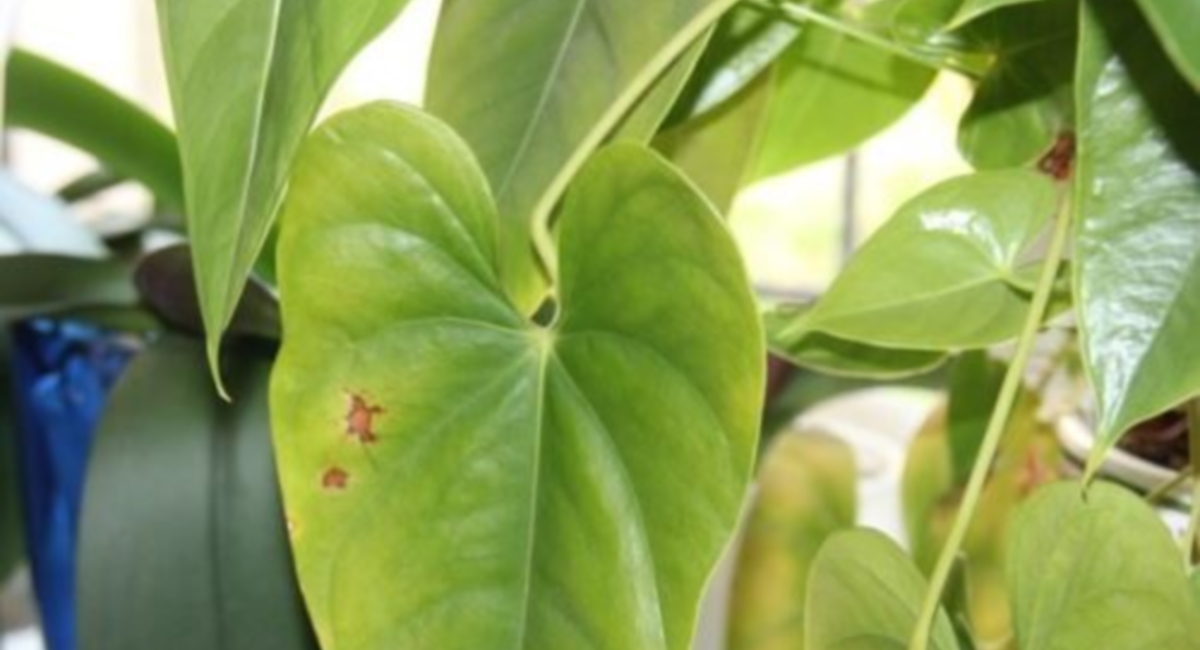
Stains due to non-compliance with the temperature regime - Direct sunlight. Anthurium is photophilous, but prefers diffused light. Under the action of the bright sun, especially in the summer, it can get a burn of leaves, which will appear as dry darkened spots and a general weakening of the plant.
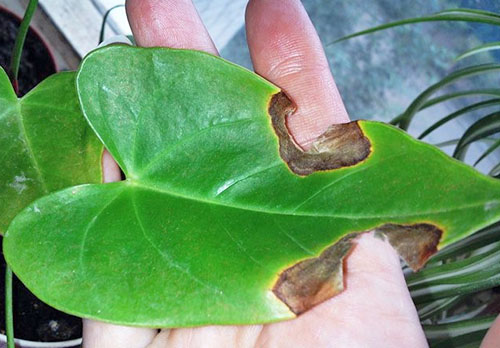
Burns - Watering with hard water. For irrigation, you need to use soft, filtered water at room temperature.
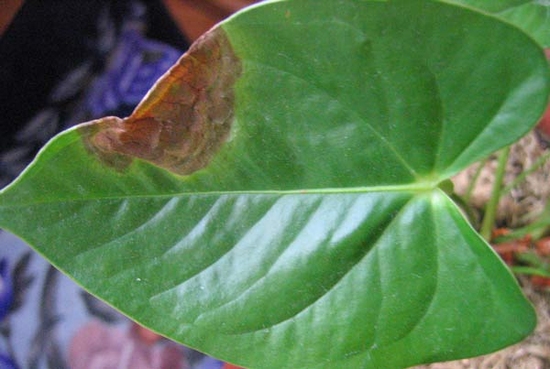
Hard watering - Drafts. The flow of cold air is heavily tolerated by the heat-loving plant, which immediately appears on the leaf.
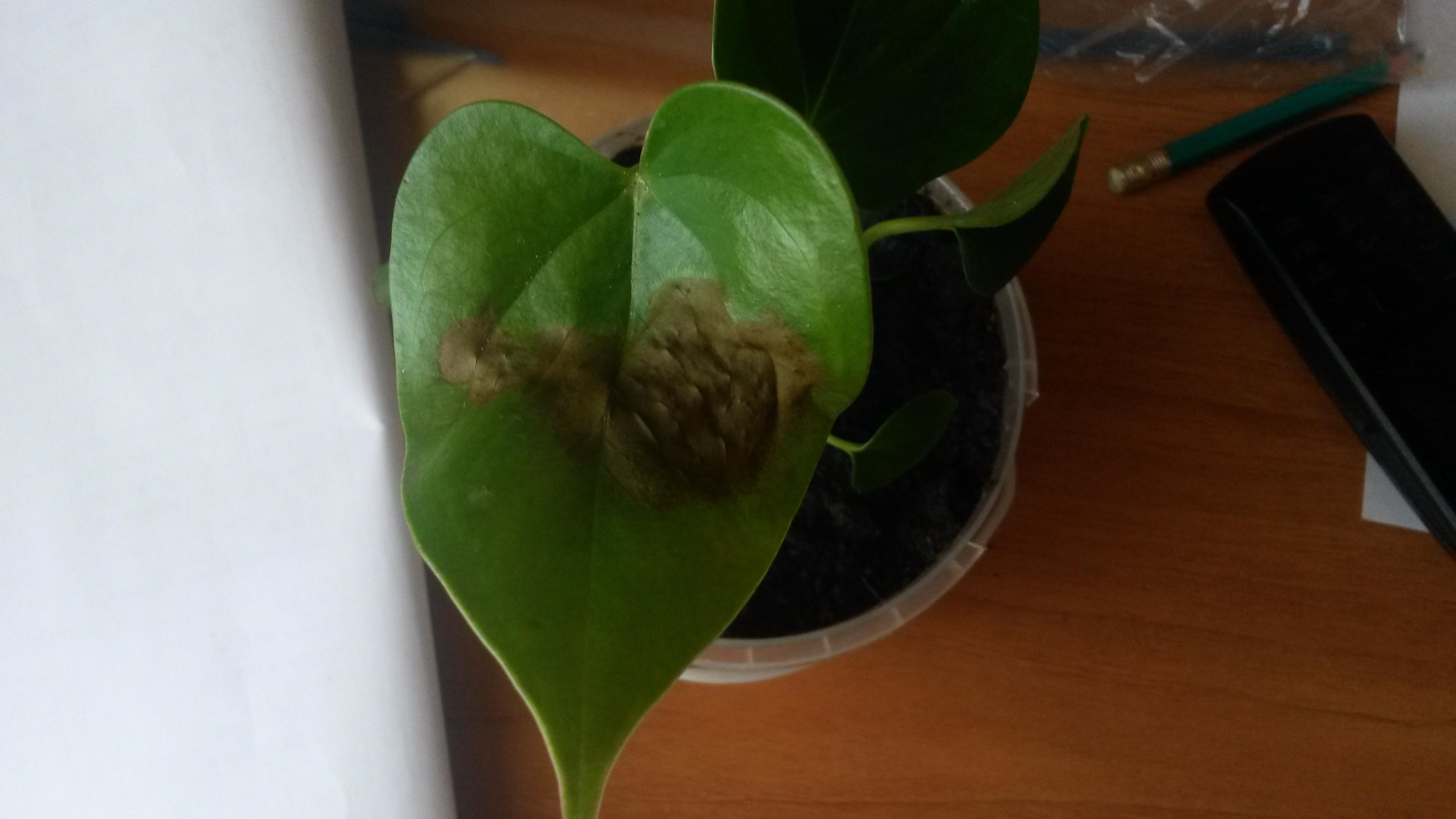
Draft Disease - Lack of lighting. It appears yellow leaves or spots of the same color.
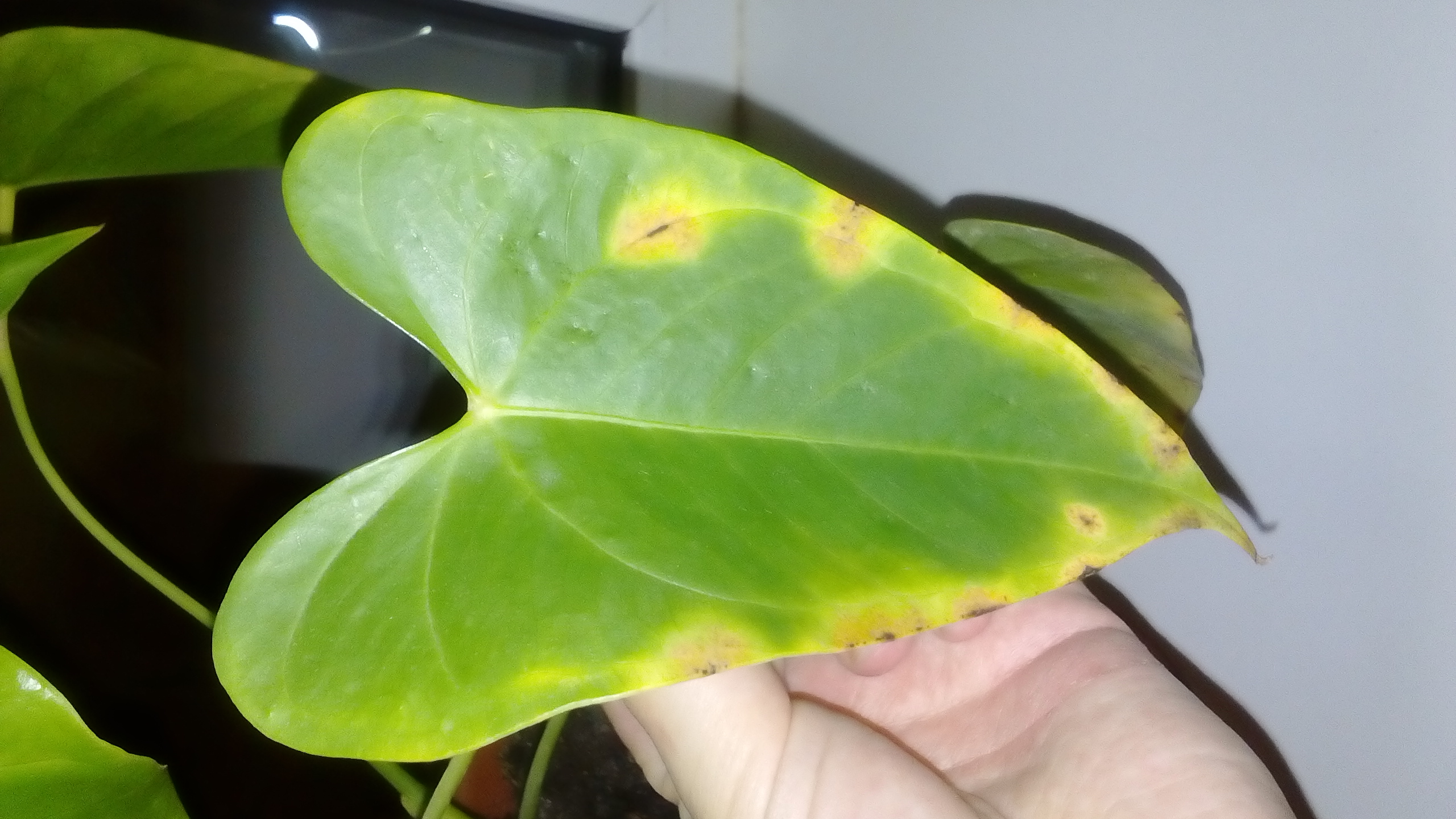
Yellowing leaves - Nutrient deficiency. Fertilizers are necessary during the period of growth and flowering. If they are not enough, then this can interfere with flowering and the color of the leaves will become noticeably paler.
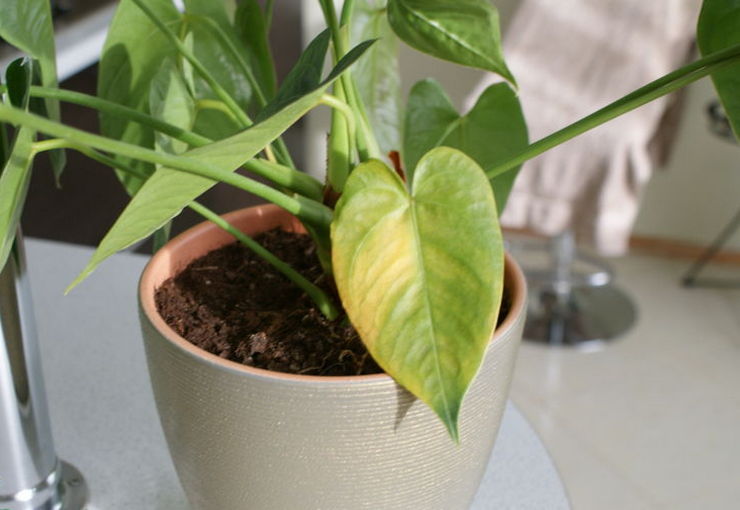
Nutrient deficiency - Violation of the irrigation regime. A lack of moisture is just as harmful as an overabundance. Both extremes will lead to the death of a room culture due to the death of the root system.
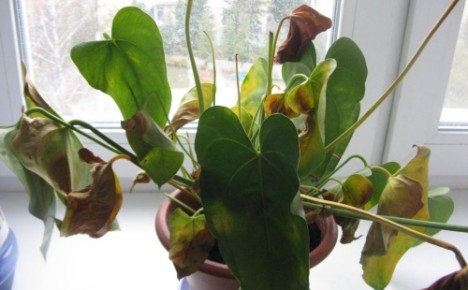
Irrigation
Pest
Long-term exposure to pests leads to the death of the flower, since the insect eats the juice of the plant and deprives it of the ability to maintain its own nutrition. Such infections are also dangerous because they can be transmitted to another green culture indoors. Regular inspection of all colors will help identify and destroy pests in the first stage of infection.
Common infection with such insects:
- Aphid. At the initial stage, you can notice that the leaves began to turn yellow and curl. When the damage to the aphids is already strong enough, an adhesive coating and plant appear.
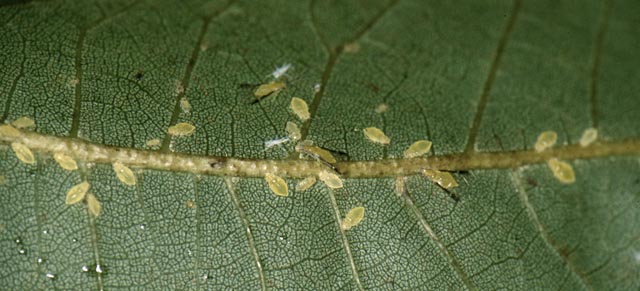
Aphid - Thrips. Infection with this parasite can be suspected by small black dots on the back of the leaf, which are also accompanied by light yellow spots of various shapes.
- Spider mite. Usually, the onset of infection is missed, since it looks like small yellow dots that gradually merge into foci and begin to deform the leaves. A tick is noticeable when it envelops the affected area with a thin cobweb.
- Shield. At the initial stage of infection, the scabbard is not visible, later it can be determined by the white tubercles on the stem and leaves.
How to treat fungal and bacterial diseases of the leaves of anthurium
Treatment of anthurium depends on the cause of the disease. First of all, you should check whether the flower is suffering from drafts or sudden changes in temperature, as this is the most common mistake in leaving. It can be an air conditioner, a fan, a constantly opening balcony door or an ajar window for airing in winter. If the cause is found, then there will be no yellowing again. But the plant still needs to be reanimated.
If the leaves turned yellow in large quantities, then you need to transplant to examine the roots and change the ground, most likely, we are talking about an infectious lesion. Treatment is carried out according to this algorithm:
- Remove all affected leaves with a sharp secateurs, and treat healthy ones with Epin - a stimulant.
- Carefully remove the plant from the pot. To do this with minimal trauma to the roots, it is better to water the flower a couple of days before transplanting.
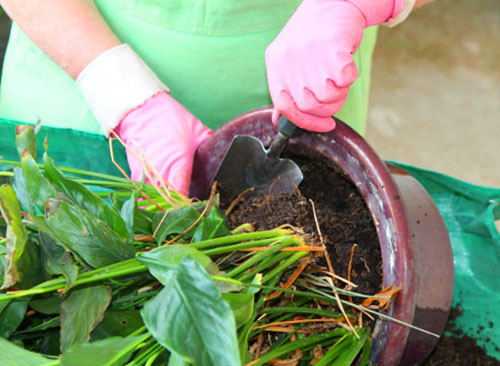
Transfer - Remove all soil from the roots and rinse them with warm soft water.
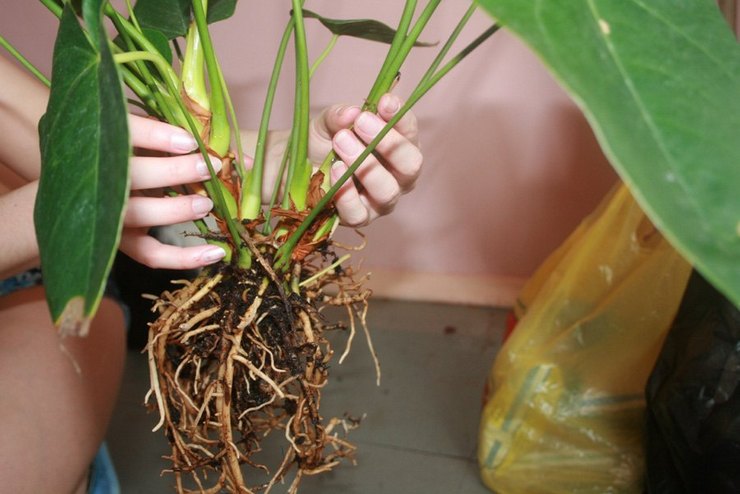
Root System Cleanup - Inspect the roots for rot, dryness or damage. Cut off all unhealthy areas with a sharp sterile knife.
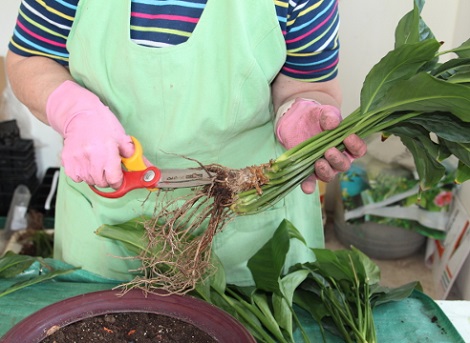
Root treatment - Treat the roots with fungicides to prevent or treat fungal and bacterial infections.
- If there are no roots left after trimming, but there are still growth points, then you need to wrap them with wet moss and put in a transparent glass. Air every day for 15-20 minutes. Keep in a greenhouse with good humidity, under a light bulb. When new roots appear, go to step 7. If there are still living roots after trimming, then skip point 6.
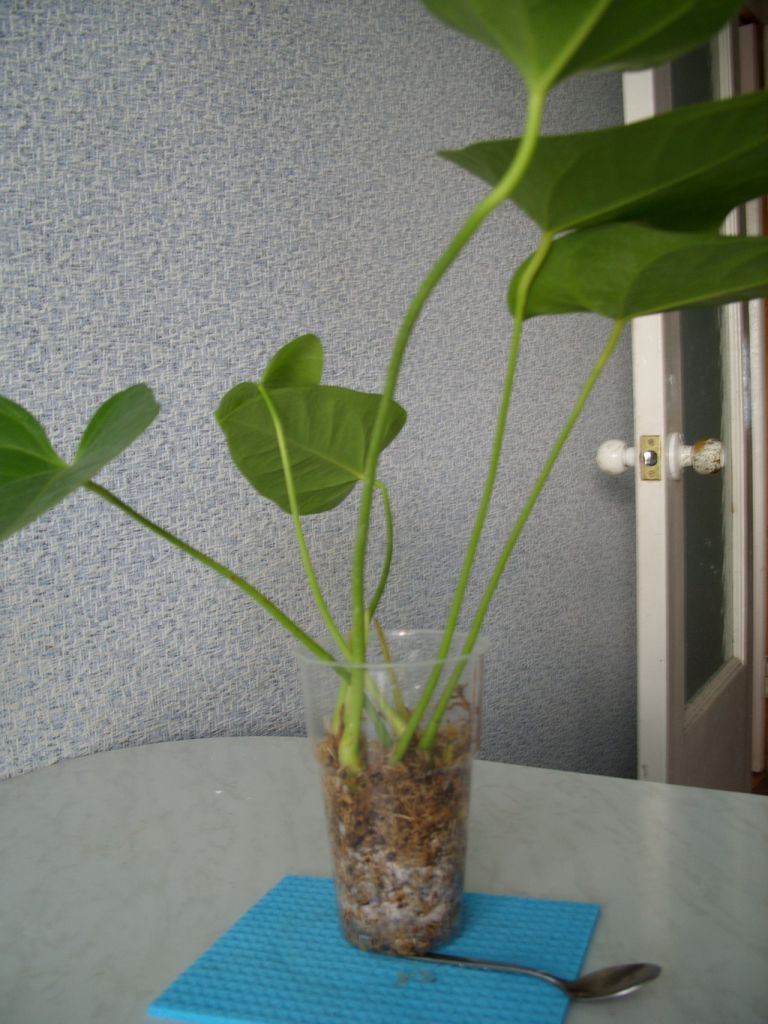
Sprouting new roots - Prepare a new pot that needs to be matched to the size of the roots. It should not be crowded, but too spacious can destroy the plant, since all the forces will go into the growth of the roots.
- 30% fill the pot with drainage. Next is a layer of soil. Soil should be taken for orchids, it is best suited for a weakened anthurium.
- Plant a plant and fill the voids with earth.
- Care during the recovery period should be very thorough, in compliance with all the necessary rules for the maintenance of this species.
Treatment for damage to the leaves of anthurium pests
Anthurium's treatment depends on which pests hit him. The simplest treatment is for aphids. To do this, the leaves are treated with chemical insecticides or folk remedies. Well-proven infusion of garlic.For its manufacture, half a glass of crushed garlic is poured with 5 liters of water and insisted for three days. The aphid does not tolerate the smell of garlic.
The fight against the spider mite is more complicated and is done according to this algorithm:
- rinse the plant under a stream of warm filtered water to wash off cobwebs and parasites;
- treat the plant with acaricide and cover with a plastic bag for 3 hours;
- after 4 days, repeat the treatment;
- Once a week, process for 3 weeks, as young growth will appear.
To combat the scale shield, you must follow this plan:
- use a soft cloth to scrape the scabs off the leaves and stems;
- treat with Aktar chemical product on the street or in a well-ventilated area, as the drug is toxic;
- in case of severe defeat, alternate with Karbofos;
- transplant anthurium into new soil, removing the remains of the old soil from the roots.
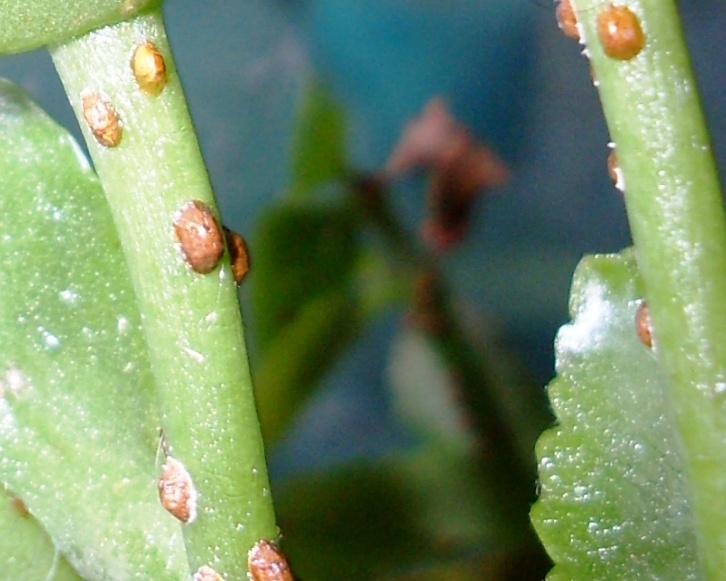
If the plant is affected by thrips, it is necessary:
- remove all affected leaves;
- carefully remove the topsoil and replace it, as thrips eggs may be laid in it;
- treat the plant with chemicals;
- for the best effect, you can use a spray preparation (Aktara) and a preparation for watering the soil (Confidor);
- repeat the procedure 4 times at intervals of 7 days;
- for prevention, a plant can be watered with a decoction of celandine or yarrow.
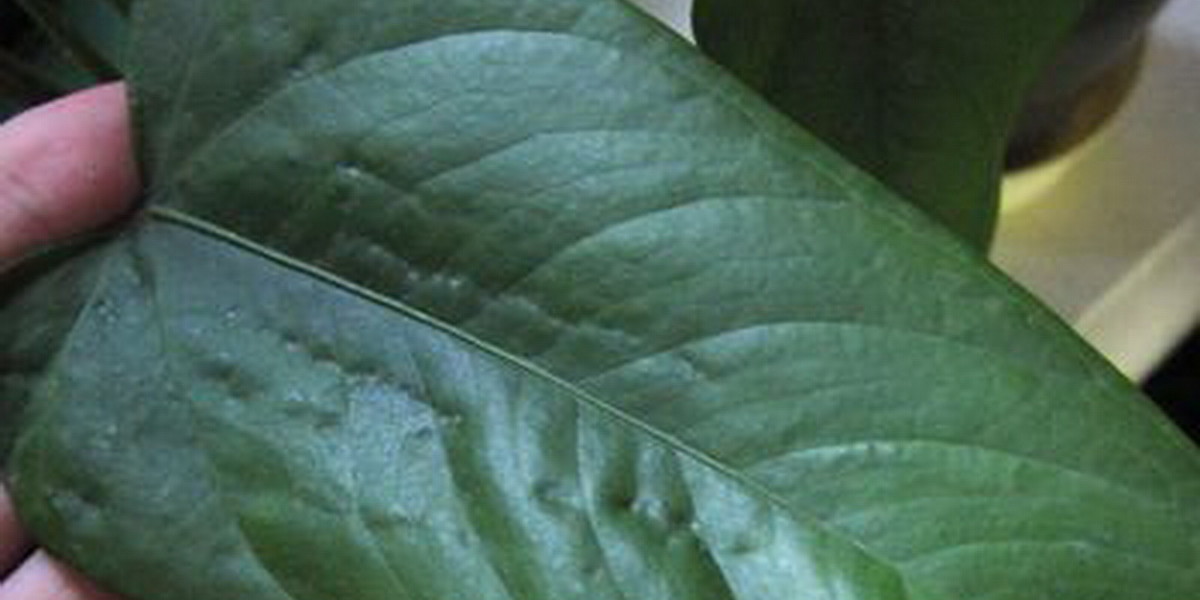
When conducting wellness procedures, it should be remembered that:
- at the time of treatment, the infected flower should be in quarantine, separate from other indoor plants;
- all work with chemicals is carried out with gloves and in ventilated rooms;
- any flowers brought from a store or another person’s house must be quarantined for up to 2 weeks to ensure security;
- the flower can easily become infected again by pests, if the conditions of care are not met with the treatment.
What to do to prevent leaf diseases
With severe lesions, treatment does not always help to save the flower, so preventive measures are the best option:
- maintain the necessary humidity in the room using humidifiers, aquariums or other devices;
- hide the plant from direct sunlight and give enough diffused light;
- adjust watering so that the roots do not dry out and do not rot; always drain excess water from the pan;
- carry out watering only with soft, settled water;
- when planting, provide a good drainage layer, which will also protect the roots from stagnation of water;
- keep the pot away from drafts and cold air;
- regularly fertilize the soil, but do not allow an excess.
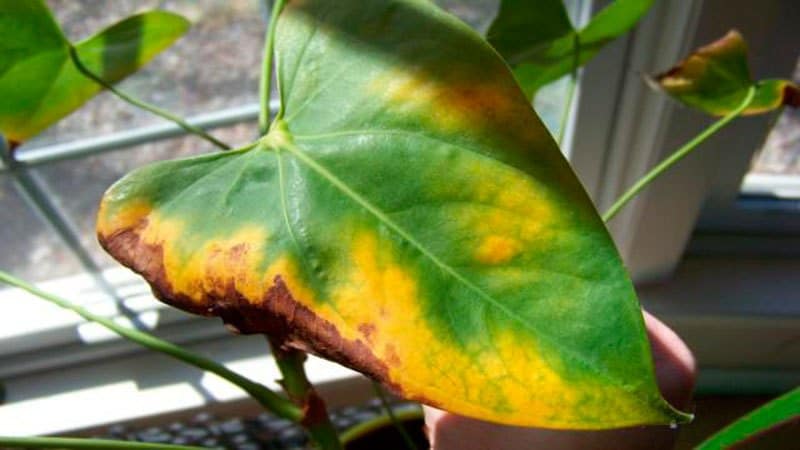
But in this case, there are preventive measures. Which will help reduce the risk of infection:
- keep all new plants in quarantine for 2 weeks;
- if the soil is suspicious, then it is better to change it;
- in spring and summer, inspection of the leaves is carried out every week, in the cold season it is possible less often;
- once a month it is possible to carry out preventive treatment of leaves with a soap solution;
- if there is a suspicion of infection, it is best to immediately treat with insecticides, without waiting for active distribution.
Common questions
Bright exot is becoming more and more popular in indoor floriculture due to its amazing appearance. But in order to maintain the decorativeness of the flower, you need to know the main points of proper care. They are quite simple and even an inexperienced grower can cope with them, but if you ignore them, the plant can seriously suffer.
Improper care contributes to the wilting of the flower, increases the susceptibility to infection by fungi and bacteria, and also becomes a favorable environment for the propagation of parasites. It is also important to remember that masculine happiness is poisonous, so all work should be carried out with gloves and kept away from children and pets.

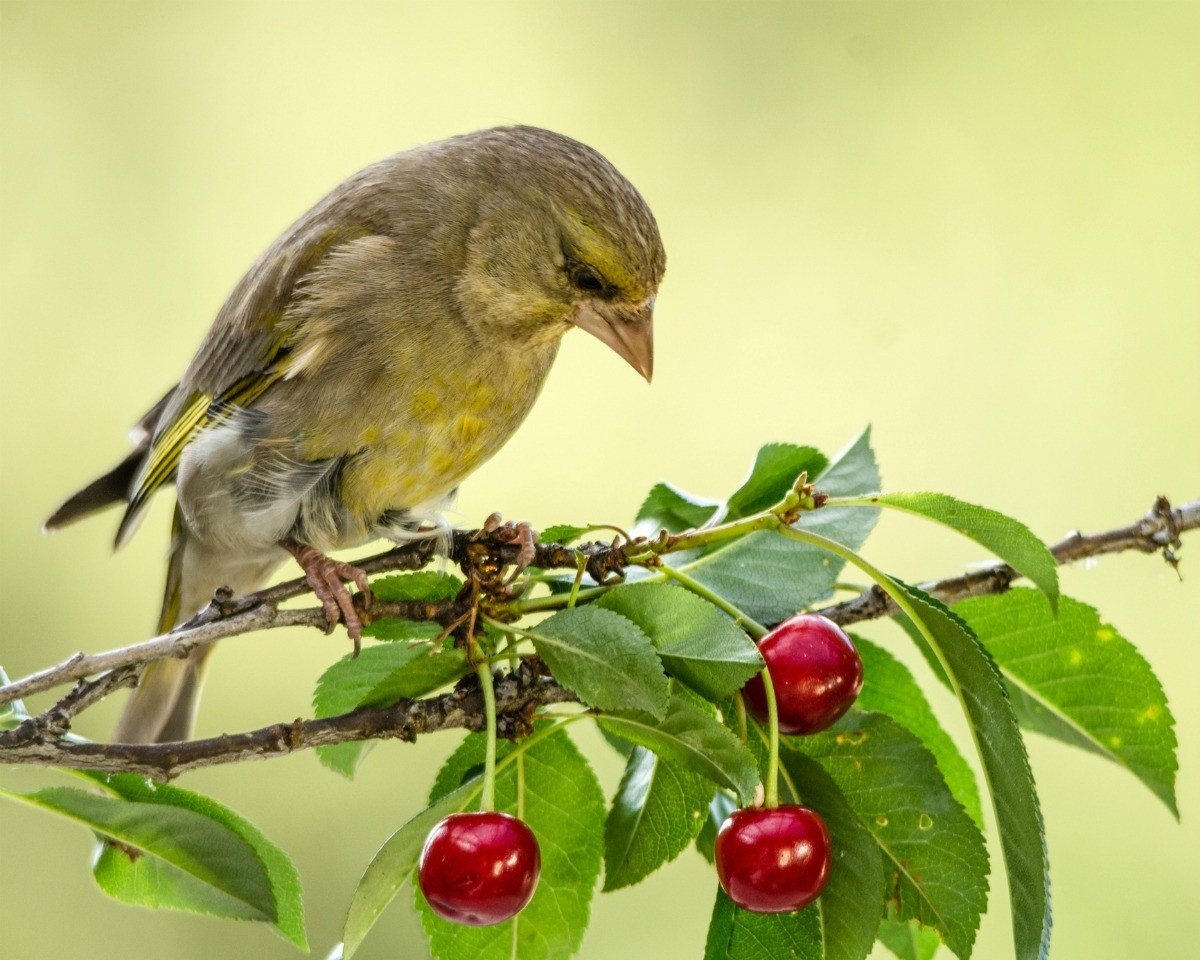
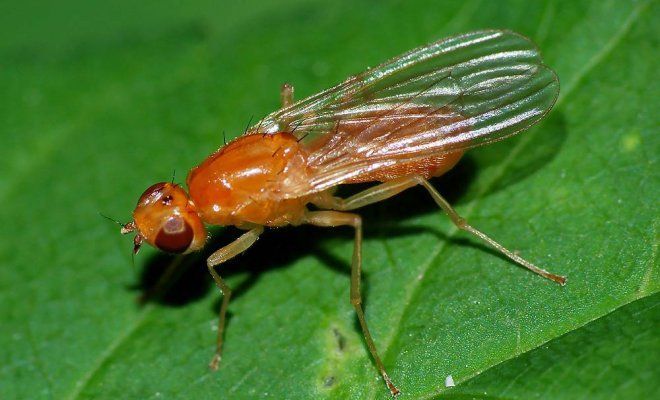
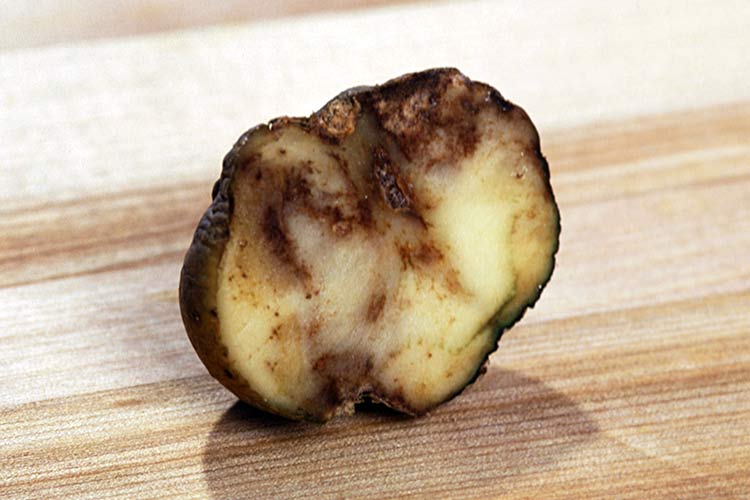
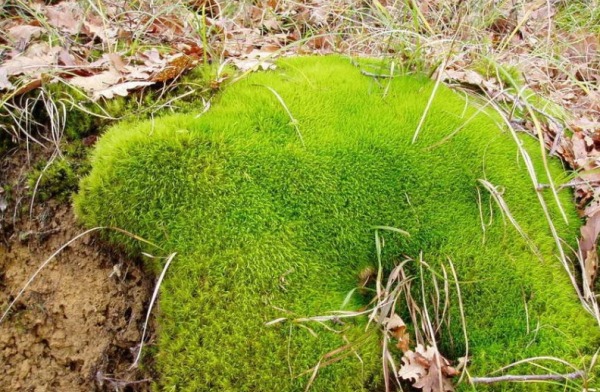 Where does moss come from in the garden and is it necessary to get rid of it?
Where does moss come from in the garden and is it necessary to get rid of it?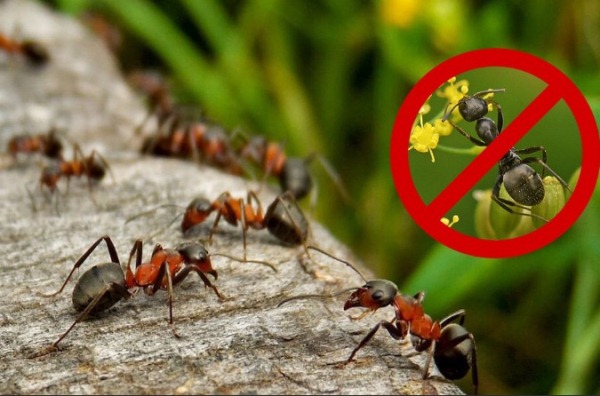 The most effective ways to deal with ants in the area
The most effective ways to deal with ants in the area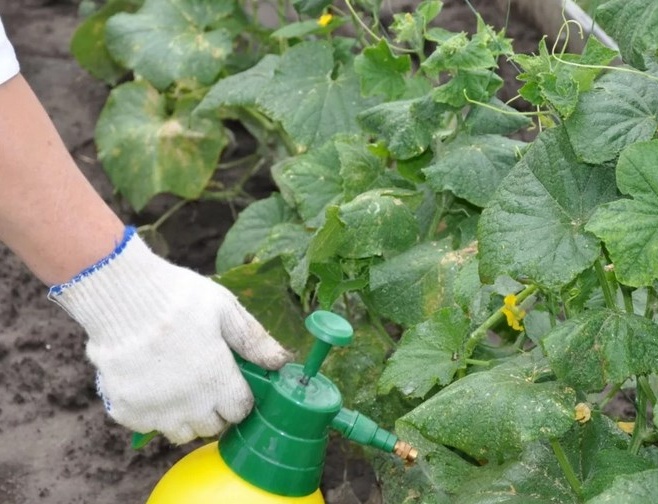 Cockchafer and Bear: An Easy Way to Save Plant Roots
Cockchafer and Bear: An Easy Way to Save Plant Roots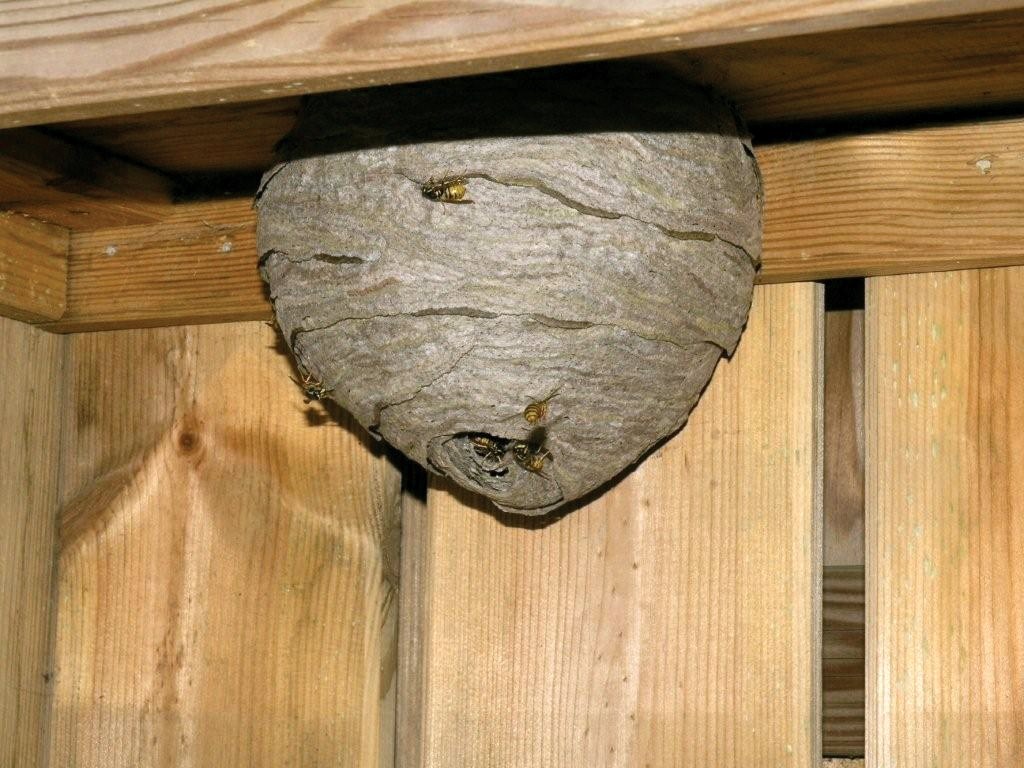 Get rid of the aspen nest quickly and safely.
Get rid of the aspen nest quickly and safely.